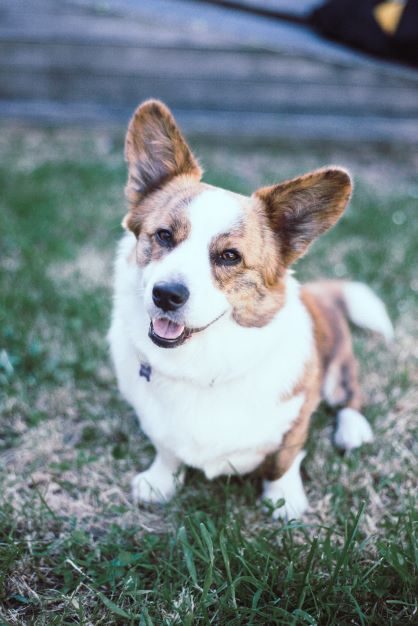Our dogs are our children, so how do we recognise their pain?
Our pets mean the absolute world to us, but sometimes it’s really difficult to know what is going on with them. They can’t tell us, so we need to be aware of some of the different tells so that we can quickly recognise if they are in pain. Whilst sometimes it may be very obvious, like in the case of a sore limb etc, other times, there may only be very subtle changes in their body language. Being aware of these can help us to keep on top of their health and avoid their discomfort.. and our vet bills.
Give your dog a regular health assessment.
You can easily give your pet a quick assessment as part of their daily cuddles and grooming. While patting them, you can gently feel all over their body for any unusual lumps or bumps. You can feel the quality of their fur and skin. A healthy coat should be shiny and smooth, rather than brittle or coarse, and healthy skin should be supple and clear, not greasy, flaky, or bumpy. Another benefit of doing this is that should there be a sore spot, this could be easily found with this gentle inspection.
Whilst patting, you can also gently lift the animals lips to check their teeth and gums. Healthy teeth should be clear of tartar, and healthy gums should be nice and pink, with no signs of swelling or infection.
Next, check their ears. Give your pets a good scratch and use this chance to check the ears for wax, dryness or red/itchy looking skin. If any of these tests provide something you weren’t expecting, or think might be a problem, call your vet. Generally they will be happy to have a chat and put your mind at ease, or let you know if a visit is required.
General signs of pain or sickness in dogs.
We all know our pooches pretty well, so some general things to look out for as a pain indicator are:
- Aggression or strange behaviour outside of the ordinary.
- Shaking or trembling
- Extreme vocalisation or vocalising more than usual. This could be in the form of growling, yelping or howling.
- Excessive grooming. If your pet is licking their paws constantly they could be trying to sooth themselves.
- Heavy panting or any change in breathing pattern for no noticeable reason. ie: They might seem puffed out or struggling to breathe but have not exerted any energy.
- Hunched over or change in posture. Dogs will often hunch their back if they are in pain of any sort.
What about if they aren't feeling well?
Changes in eating habits
We all know most dogs LOVE food. So a huge indicator of whether they are feeling ok is a change in their regular food habits. If your dog normally has a good appetite and suddenly goes off their food, this should be monitored and the vet called if they are off their food for more than 1 day.
Changes in pooping habits
I’m sure as a dog owner you know the poop scale by now. A normal poop should be brown and of play dough consistency. It should hold together when picked up. Anything different to this, you can check against the poop scale and determine whether a vet visit is in order. If runny poop is present, once does not require an immediate visit, however should this occur for more than 24 hours you should definitely get your dog to the vet. Always ensure your dog has access to and is drinking plenty of water if diarrhoea is present, as they can quickly become dehydrated.

When should I call the vet?
It can sometimes be really hard to know whether to call the vet. Some of the most common and important reasons to do so include:
- Eating something dangerous or toxic.
- Off their food or water for more than two meals or 24 hours.
- Difficulty breathing or obvious vocalisation of pain.
- Open wounds
- Runny or unusual poop for more than 3 x bowel movements.
Of course, it’s always better to be safe than sorry, so if you’re EVER unsure. Call your vet, they will be happy to help you. At Furmail, we do have our resident vet at hand to help you with any queries, so you can also contact us for guidance.